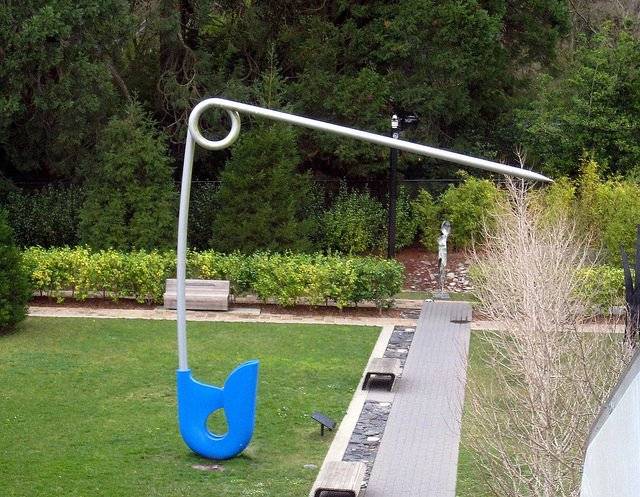A destitute man was nervously twisting a brass wire in his work-shed, trying to think of something that would help him pay off his debt, when an idea struck him. The man was Walter Hunt, and the idea was a dress pin, which we know as the modern safety pin. In his patent filing for the safety pin, Hunt described the invention of “a pin made of one piece of wire or metal combining a spring, and clasp or catch,” in which the point of the pin is securely retained. Hunt received the patent, numbered 6281 on 10 April, 1849 for his invention. The key enhancement in the modern safety pin was the safety clasp that covered the sharp point. As the pins could conveniently be inserted into the dress without wounding the finger, it came to be known as safety pin.
(Image of the Safety Pin Patent. Image in the public domain)
Walter Hunt was a prolific inventor who invented almost everything from safety pin to ice breakers for ships, nail making machines, safety lamps, knife sharpeners, rope twisting machines, wood saws, heating stoves, sewing machine among several other inventions, but never rose to fame due to a lack of business acumen. Hunt invented and sold off his patents to feed his family of fourteen – wife and 13 children. The safety pin patent was acquired by W.R. Grace & Co., which made millions off it. An obituary for Hunt in the New York Tribune stated, “For more than 40 years, he has been known as an experiment in the arts. Whether in mechanical movements, chemistry, electricity or metallic compositions, he was always at home: and, probably in all, he has tried more experiments than any other inventor.”
(Image of Walter Hunt. Image in the public domain)
Apart from being a vital part of a woman’s wardrobe for centuries, safety pin has found many uses in households and fashion. In the 1970s, safety pins emerged as punk fashion (clothing, hairstyles, jewellery and body modifications of the punk rock subculture), in clothes and as body piercings. Although many modern fasteners have been invented since, the safety-pin remains a necessity throughout the world. Along with utility, safety pins are also associated with culture and tradition. For instance, in Ukraine, safety pins are pinned inside a child’s clothing to ward off evil spirits.
And, as the following lines suggest, safety pin can also be used for mending broken hearts!
“We’ll safety pin, the pieces of our broken hearts back together
Patching up all the holes until we both feel much better….”-‘Sounds good, feels good’ by 5 Seconds of Summer
Authored by Rajni Mishra.
About Rajni Mishra
Rajni Mishra is a registered Indian Patent agent and currently works with the IP department of Tata Elxsi, Bangalore as Senior Executive. She has worked as an IP Specialist with Infosys IP Cell and as an IP analyst with Brain League IP Counsels earlier. Rajni holds a Masters in Business Administration from Amity University, Noida, and a post graduate diploma in Intellectual Property Law from National Law School of India University, Bangalore. Rajni has worked across patent portfolio management, patent analytics, IP audits and risk management, and has consulted and managed IP portfolios of more than 50 companies in different technology domains, ranging from Fortune 500 companies to start-ups and individuals. She also actively contributes to building IP capacity and creating IP awareness.
Image Source/Attribution here, governed by Creative Commons License CC BY 2.0.





